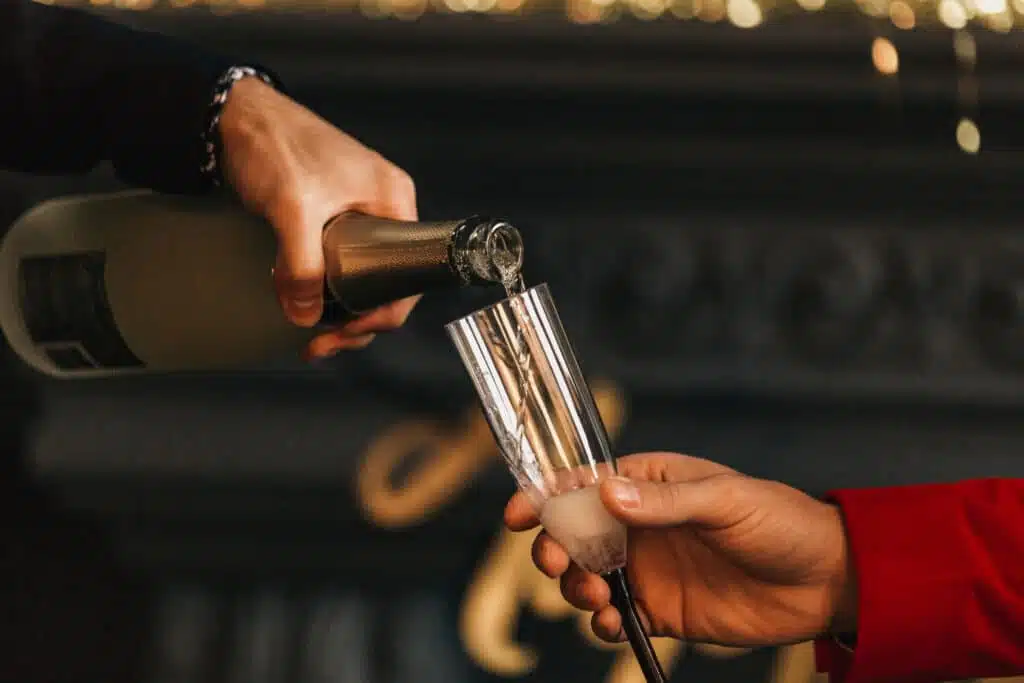Champagne” is certainly one of the best-known French words in the world.
And rightly so! Champagne, an effervescent wine, has been the delight of many (more or less erudite) connoisseurs for centuries. It takes its name from the region from which it originates, Champagne, which claims only one main appellation.
Champagne vineyards cover 33,000 hectares in the Marne, Aube and Aisne departments.
Champagne is produced from three major grape varieties: pinot noir, pinot meunier (for red grapes) and chardonnay (white grapes).
Producing a good champagne requires patience and financial resources, as this effervescent wine is labor-intensive (for grape and wine handling) and requires time in the cellar for aging. Before becoming champagne, it is a still wine that gradually transforms into an effervescent wine after a process known as “prise de mousse”. Legend has it that this vinification method was created by the monk Dom Pérignon (the name certainly rings a bell!).
Often copied, the Champagne appellation is particularly protected. No wine produced beyond the borders of this appellation has the right to bear the famous title of “Champagne”. There are several types of Champagne:
– Champagne d’assemblage classique is the most commonly used. It involves blending different grape varieties, crus and vintages. Each year, it must be reconsidered in order to reproduce a wine in the continuity of each house’s style.
– Vintage champagne: this is generally a guarantee of quality. It has the particularity of being made from a blend of wines from the same harvest. It often differs from the usual house style, but is no less significant and often shines with excellence.
– Blanc de Blancs” champagnes are made from a single white grape variety, Chardonnay. These champagnes are generally fresh and delicate, characteristic of this grape variety.
– Blanc de Noir” champagne is made from black grapes (pinot noir and/or pinot meunier). It expresses the strength of pinot noir and/or the fruitiness of pinot meunier, which are the only grape varieties used in its vinification.
– Champagne rosé can be produced in two different ways:
1) by “saignée”, the result of momentary fermentation with pulp, followed by pressing to extract tannins and anthocyanins (the coloring elements of red wine found in grape skins);
2) or by blending red wine with red wine.
It is best served at a low temperature, between 8°C and 10°C:
Wikeeps, thanks to its small Wibox refrigerated wine cellars, can store up to eight bottles simultaneously at the ideal temperature.10 years after its still wine conservation patent, Wikeeps also launched its sparkling wine conservation patent in November 2022: BUBBL.
Perfectly preserve your bottle for a week – bubbles and aromas – with a simple, portable and highly effective system.This system required years of development and R&D, notably on the oenological gas used (a mixture of CO2 and N2 this time).
But the results are impressive, and professionals are not mistaken.
Enjoy your wines and champagnes to the full, day after day, thanks to Wikeeps!
Wikeeps , the best wine for longer!

